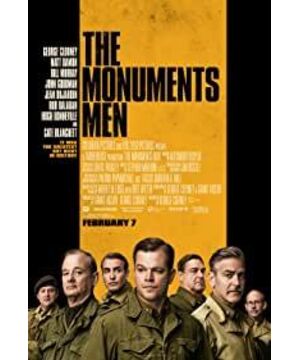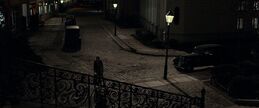"Allied Treasures" with the all-star lineup and the theme of the treasure is easily reminiscent of the sensational "Eleven Arhats" series, but George Clooney, who has several roles, obviously does not simply fry the audience to fool the audience. . His original intention was to reproduce a little-known story of World War II to the world based on the real historical background and unearth the spirit of sacrifice, which is the preciousness of life and the higher price of cultural relics. But the whole film often wanders between commercial entertainment and heavy history. It has both unprepared humor and tragic moments in the face of crisis, so it always gives people a sense of instability.
If a country or a nation is destroyed, it can be reborn by spiritual death, but if the artwork that represents civilization is burned, then the history and significance of the entire country will no longer exist. This is the core theme of the whole film, and it is also the belief and burden carried by eight art experts and scholars. What is interesting is that when these elderly, weak, sick and disabled, all over the age of 40 or 50, decide to risk their lives and go deep into the front lines of World War II to stop Hitler's conspiracy, the first thing they have to face is the basic physical training of soldiers. Such hilarious settings permeate almost every corner of the film. Whether it is a critical moment of life or death, or a moment of sentimental depression, there will be some black humor from time to time, but these jokes are too close to the oral habits of the Americans, and mainland audiences may be A little bit unaccustomed.
The setting of the laugh point is a double-edged sword, one side to please the audience but the other side is seriously inconsistent with the thickness of the film's war background, which caused the performance of the eight movie star actors to be slightly caressed and precarious. Since the overall style does not tend to be serious, whenever the plot goes deep into the promotion of the main melody complex, the transition will be very blunt, and the straightforward sermon lines are always contrived and sentimental, which makes the audience's favor suddenly diminished. After all, sensationalism and preaching have obviously become the dead spots of the main theme of the movie. If you can't grasp the scale, it will make the political stance of the film appear too ambiguous.
The biggest advantage of the film is that the picture is retro, the texture is nostalgic, and the yellowish tone gives people a strong sense of substitution. We all know that World War II scenes are more difficult to shape, including large outdoor scenes such as battlefields, mines, and large museums. However, it is surprising that the film actually restores more than a thousand works of art, whether it is a picture or a sculpture, it can be fake. The meticulous polishing of the details still makes up for the fault of the plot. At least the vision given to the audience is very convincing. Of course, the emotion and the elaboration of the history are what the film really wants to show to the audience.
Throughout the whole film, in addition to telling everyone the story of Hitler's cruel and selfish plundering of artworks and cultural heritage, it is also to extol the unsung heroes who have been crawling under the smoke in the flames of war. In fact, this film has been entangled with the question of whether it is worth sacrificing lives to save cultural relics, and the film uses an extremely touching ending to give an answer. Own answer.
View more about The Monuments Men reviews











